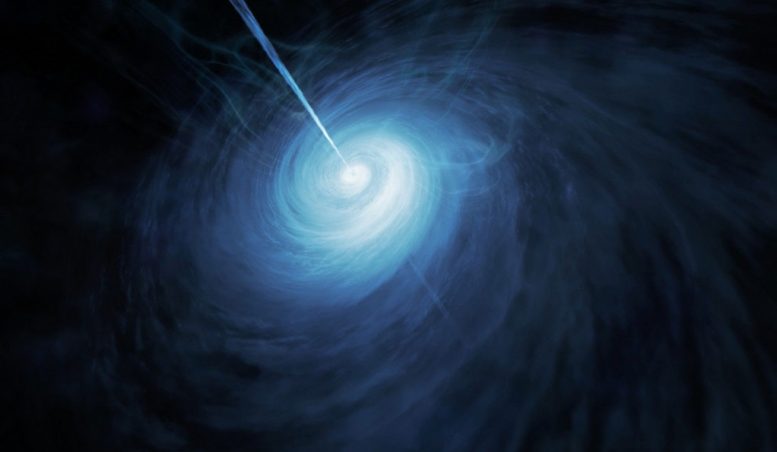
An international team has identified the brightest quasar from the early universe, magnified by gravitational lensing to appear as bright as 600 trillion suns. Situated 12.8 billion light-years away, this discovery could lead to new insights about ancient quasars and the universe’s early history.
Researchers have discovered the brightest quasar yet known, detected from the period when the universe’s star-making hydrogen gas became ionized, known as “reionization.”
The international research team found the quasar’s exceptional brightness to be caused by gravitational lensing, a phenomenon by which the gravity of objects closer to Earth acts as a magnifying glass to observe objects much farther away in space.
Quasars are the bright cores found in some galaxies, powered by supermassive black holes. Their brightness is believed to come from the hot material that falls into the black hole.
“The detection of this peculiar source in the faraway universe is a major discovery for a surprising reason,” said Yale postdoctoral associate Fabio Pacucci, co-author of a study that will be published in The Astrophysical Journal Letters, as well as lead author of a follow-up paper on the theoretical implications of the discovery. “For decades we thought that lensed quasars should be very common in the faraway universe, but this is the first source of this kind that we have found.”
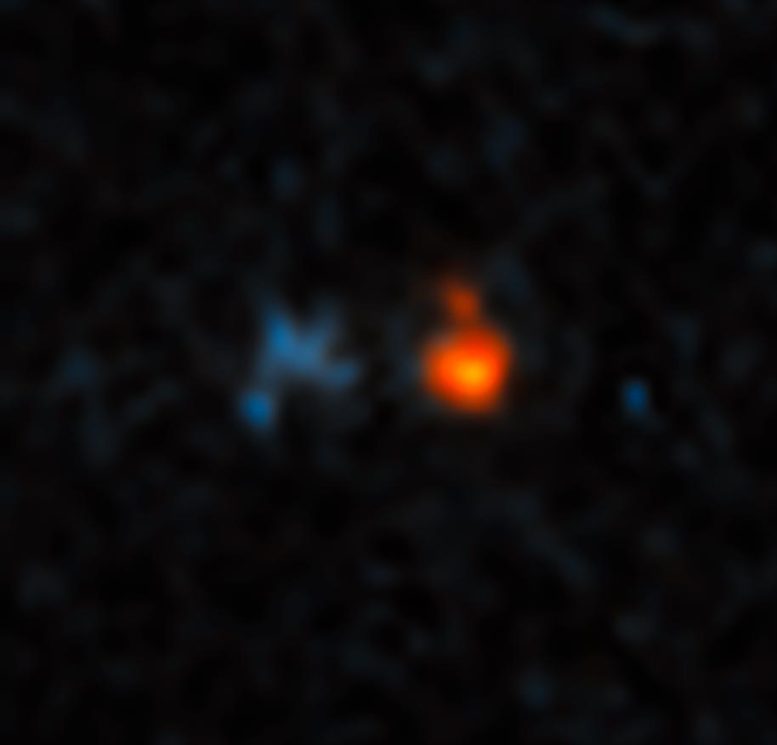
This is a Hubble Space Telescope image of a very distant quasar (at right) that has been magnified and split into three images by the effects of the gravitational field of a foreground galaxy (left). Shining with the brilliance of 600 trillion Suns, the quasar is fueled by a supermassive black hole at the heart of a young galaxy in the process of forming. The image shows the quasar as it looked 12.8 billion years ago — only about 1 billion years after the big bang. The quasar appears red because its blue light has been absorbed by diffuse gas in intergalactic space. By comparison, the foreground galaxy has bluer starlight. Credit: NASA, ESA and X. Fan (University of Arizona)
Pacucci and his colleagues said the super-bright quasar, cataloged as J043947.08+163415.7, could hold the record for being the brightest in the early universe for quite some time. It shines with light equivalent to 600 trillion suns and is located 12.8 billion light-years from Earth. As astronomers look farther into space in terms of distance, it allows them to look farther back in time, closer to the time of the Big Bang.
The discovery was announced on January 9 during a press conference at the 233rd meeting of the American Astronomical Society in Seattle. The lead investigator is Xiaohui Fan, Regents’ Professor of Astronomy at the University of Arizona’s Steward Observatory.
“This detection gives us a clue about how to find a population of ‘phantom quasars,’” Pacucci said. “These sources are difficult to detect, as our observations are misled by the presence of the lensing object, in between the faraway quasar and the Earth. If they do exist, ‘phantom quasars’ could revolutionize our idea of the most ancient history of the universe.”
Reference: “The Discovery of a Gravitationally Lensed Quasar at z = 6.51” by Xiaohui Fan, Feige Wang, Jinyi Yang, Charles R. Keeton, Minghao Yue, Ann Zabludoff, Fuyan Bian, Marco Bonaglia, Iskren Y. Georgiev, Joseph F. Hennawi, Jiangtao Li, Ian D. McGreer, Rohan Naidu, Fabio Pacucci, Sebastian Rabien, David Thompson, Bram Venemans, Fabian Walter, Ran Wang and Xue-Bing Wu, 9 January 2019, The Astrophysical Journal Letters.
DOI: 10.3847/2041-8213/aaeffe
The researchers made use of multiple Hawaii-based observatories in their work, including Gemini Observatory, the James Clerk Maxwell Telescope, United Kingdom Infra-Red Telescope (UKIRT), the W.M. Keck Observatory, and the Panoramic Survey Telescope and Rapid Response System (Pan-STARRS1).

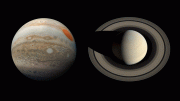
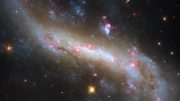


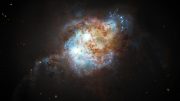


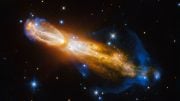
Be the first to comment on "Astronomers Discover the Brightest Quasar to Date in the Early Universe"